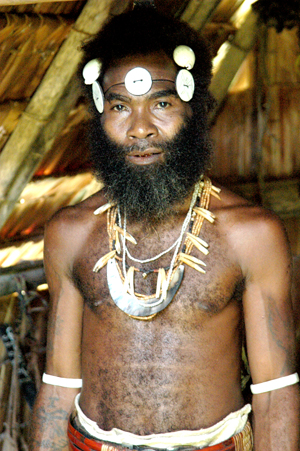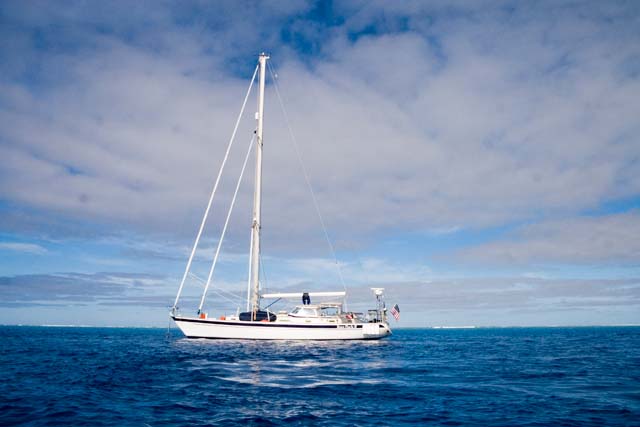“Eden in the East” is a 500+ pages tour de force by British
author Stephen Oppenheimer, a former doctor who used to work in Southeast Asia
and New Guinea, immersing himself in the local cultures. In his book,
Oppenheimer proposes that some of the roots of “Western”, Indian and Chinese
civilization are Southeast Asian in origin. He postulates the existence of a
relatively advanced founder culture in Sundaland, an ancient landmass
connecting the Malay Peninsula, Sumatra, Borneo and Java. Sundaland was flooded
at the end of the last Ice Age.
Oppenheimer believes that the ancestors of modern Austronesians and
Austro-Asiatics lived in Sundaland (most archeologists place the origins of
Austronesians in China). The survivors of the catastrophic floods migrated to
present-day Indonesia, the Philippines, parts of New Guinea and the Pacific
Islands, but also to Southeast Asia and India. They influenced the budding high
cultures in India, Tibet, Sumeria and Egypt through their long-distance trading
networks. Indirectly, they also influenced the Uralic peoples, whose languages
are distantly related to Asiatic ones. Oppenheimer's scenario entails that most
of Southeast Asian and Pacific history/archaeology has to be backdated
thousands of years, including the Polynesian expansion, and he spends
considerable time attempting to prove his point. In general, Oppenheimer holds that Southeast Asia was more advanced during the Neolithic and the Bronze
Age than traditionally assumed, and that these cultures were connected to other
high cultures in southern China and Japan (Jomon).
To Oppenheimer, the Deluge legends are about an actual historical event (or
events), the previously mentioned floods at the end of the last Ice Age, which
affected the whole world. Even more controversially, the author argues that the
Biblical narratives of creation and Eden are ultimately derived from Southeast
Asian myths, and so are the well-known legends of “world trees” and “the dying
and rising gods”. Cain and Abel is also originally a Southeast Asian story. The
author doesn't believe that Christian missionary influence can account for all
the similarities – some legends were written down by baffled Westerners
(including missionaries!) before Christian influence became pervasive. Many of
the “Western” legends are most diverse at the Moluccas in Indonesia, suggesting
they originated there.
It's interesting to note that the Sumerians had a peculiar legend about
“amphibious” culture-heroes who came by sea from the East. Could they have been
Austronesian sea-fearers from the lost Sundaland culture? Both Eden and Nod
were said to be in the east. In India, there are legends about an ancestral
homeland in the east. By contrast, Polynesians have legends about an ancestral
homeland in the West, which is no longer accessible to mortals! At the Tonga
islands, the homeland is said to be in the northwest specifically. All these
geographical references point to Sundaland, east of India (and Mesopotamia) but
west or northwest of the Pacific Islands. Apparently, Tongans also believed in
a large landmass further east of their islands. America?
To students of occultism, the concept of Sundaland should sound familiar. Yes,
it's Lemuria or Mu! Oppenheimer does have a soft spot for “forbidden
knowledge”, referencing Graham Hancock, Charles Hapgood and Immanuel
Velikovsky. He probably stands in the proud alternative tradition of
neo-catastrophism. However, his arguments are not based on occult or
alternative sources. Instead, the author tries to argue scientifically on the
basis of archaeology, linguistics, genetics and comparative mythology. I admit
that I only skimmed most chapters – they are filled with incredible amounts of
detailed information! Ironically, this large door-stopper of a book
nevertheless feels only half-done. Among subjects *not* touched upon are: the
mysterious culture of Easter Island, possible connections between East
Asia/Polynesia and America during the Bronze Age, the origin of the Dravidian
and Sumerian peoples, and the exact relation between Indo-European mythology
(which also includes the World Tree) and that of Southeast Asia. Nor does the
author say much about “Lemurian” influence on China. He also seems to have
problems with Atlantis, regarding it as a peculiarly erroneous myth, since the
real founder culture was in the East. The Atlantis story, of course, places it
in the West! But why should this be a problem? Many landmasses were flooded
after the Ice Age…
Oppenheimer is mildly uncomfortable with some aspects of the rich mythology he
has unearthed. In New Guinea and Tonga, the aliens from across the sea are
often depicted as light-skinned, while the natives are dark-skinned. To the
author, this suggests relative differences in skin tone, Austronesians being
less dark than Papuans (presumably, the Austronesian Tongans were pitted
against even less dark Austronesians from a later migration). Even so, it's
certainly weird that a negative view of Black skin existed already during this
early period! The author believes that the sea-farers from Sundaland were
pitted against Austroloids and Negritos in New Guinea, the Malay Peninsula and
perhaps India. The identification between fairer skin and higher status was
later applied to the White Europeans, for instance in cargo cults.
I was surprised by “Eden in the East”. Oppenheimer may not be a “real” scholar,
and he has a tendency to take an idea and run with it, but his ideas certainly
deserve a hearing. The book may be “fringe”, but it's not crazy, conspiracist
or unduly fanatic. After reading it, I'm convinced that “Lemuria” actually
existed, although I can't vouch for every concrete detail in this voluminous
work. Even so, four
stars!


_warriors_posing_with_penis_gourds_and_spears%2C_New_Caledonia.jpg)







